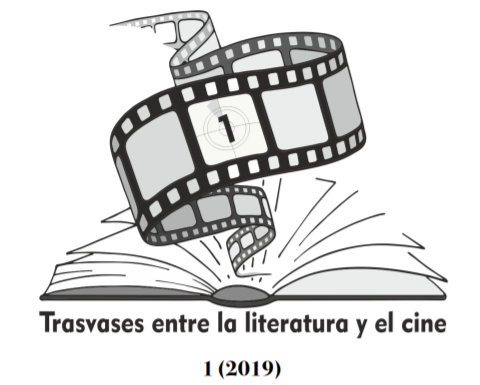The passions of Joanna the Mad in Spanish cinema: from history and theatre to adaptations, re-adaptations and mixed remake
DOI:
https://doi.org/10.24310/Trasvasestlc.v1i0.6435Keywords:
Literature, Cinema, History, Theater, remake, film adaptation, Joana I of Castile, Manuel Tamayo y BausAbstract
Joanna I of Castile, unfortunately also known as Joanna the Mad, is an important historical figure, whose tumultuous life caused fascination and interest from the Romantic era onwards, when an idealized image of her was shaped by diverse artistic works. The drama play La locura de amor (The Madness of Love, Manuel Tamayo y Baus, 1855) is the basis for the plot of most films about Joanna in Spanish cinema. An analysis of these productions allows us to identify different transfers from literature to cinema and the ideological, political, or sociological determining factors at the time of each production. History, literature and cinema can be combined to extract from the figure of Joanna a reflection of social change in Spain throughout more than a century.
Downloads
Metrics
Publication Facts
Reviewer profiles N/A
Author statements
Indexed in
-
—
- Academic society
- N/A
- Publisher
- Universidad de Málaga
References
ANÓNIMO (2003), Historia de la célebre reina de España Doña Juana, llamada vulgarmente la Loca [ed. digital basada en la de Madrid, Imprenta de D. José María Marés, 1848], Alicante, Biblioteca Virtual Miguel de Cervantes [En línea: http://www.cervantesvirtual.com/nd/ark:/59851/bmc5h7c6].
BENET, Vicente J. (2012), El cine español. Una historia cultural, Barcelona, Paidós.
BERNAL, Antonio-Miguel (2007), Historia de España. 3. Monarquía e imperio, Barcelona, Crítica-Marcial Pons.
CAPARRÓS LERA, José María (2007), Historia del cine español, Madrid, T & B.
DÁVILA VARGAS-MACHUCA, Miguel (2007), «Locura de amor o pasión obsesiva: la figura de Juana la Loca en el cine», Metakinema. Revista de Cine e Historia, 0, págs. 113-130.
ESPAÑA, Rafael de (2013), «La Antigüedad al servicio de la actualidad. Cómo las ideas del presente influyen en la recreación cinematográfica del pasado», en B. Antela-Bernárdez y C. Sierra Martín (eds.), La Historia Antigua a través del Cine. Arqueología, Historia Antigua y tradición Clásica, Barcelona, Universitat Oberta de Catalunya, págs. 45-76.
GASCA, Luis (1998), Un siglo de cine español, Barcelona, Planeta.
GÓMEZ, María Asunción (2006), «Mujer, nación y deseo en Locura de amor de Juan de Orduña y Juana la Loca de Vicente Aranda», Film-Historia, XVI/1-2 [En línea: http://www.publicacions.ub.edu/bibliotecaDigital/cinema/filmhistoria/2006/REVISTAS/Ensayo_MujerNacionDeseo%20_1.htm].
GUILLAMÓN CARRASCO, Silvia (2015), «La sexualización de la heroína histórica en el cine español: de Locura de amor a Juana la Loca», Asparkía, 27, págs. 113-130.
JUAN-NAVARRO, Santiago (2005), «La madre patria enajenada: Locura de amor, de Juan de Orduña, como alegoría nacional», Hispania, 88, págs. 204-215.
JUAN-NAVARRO, Santiago (2008), «Political madness: Juan de Orduña’s Locura de amor as a National Allegory», en M. A. Gómez, S. Juan-Navarro, P. Zatlin (eds.), Juana of Castile. History and Myth of the Mad Queen, Lewisburg, Bucknell University Press, págs. 210-221.
LÓPEZ LÓPEZ, Yolanda (2004), «Visiones sobre Juana la Loca: las recreaciones de Juan de Orduña y Vicente Aranda», en J. Cabeza y A. Rodríguez (coords.), Creando cine, creando historia: la representación cinematográfica de ideas y movimientos sociales, Madrid, Universidad Complutense, págs. 117-130.
MALPARTIDA TIRADO, Rafael (2012), «Dos obras maestras de la adaptación de la novela al cine: El último refugio y Retorno al pasado», en J. Sánchez Zapatero y A. Martín Escribá (coords.), El género negro: el fin de la frontera, Santiago de Compostela, Andavira, págs. 367-375.
MALPARTIDA TIRADO, Rafael (2018), «La recepción y el canon de la literatura y el cine: sugestiones y replanteamientos», en R. Malpartida Tirado (coord.), Recepción y canon de la literatura española en el cine, Madrid, Síntesis, págs. 17-53.
MÍNGUEZ MARTÍN, Luis (2004), «Psicobiografía de Doña Juana I de Castilla y Aragón», Informaciones Psiquiátricas, 175 [En línea: http://www.informacionespsiquiatricas.com/anteriores/info_2004/01_175_05.htm]
MONTERDE, José Enrique (2000), «El cine de la autarquía (1939-1950)», en R. Gubern et al., Historia del cine español, Madrid, Cátedra, págs. 181-238.
PAYÁN, Miguel (2007), La historia de España a través del cine, Madrid, Cacitel.
PÉREZ PERUCHA, Julio (2000), «Narración de un aciago destino (1896- 1930)», en R. Gubern et al., Historia del cine español, Madrid, Cátedra, págs. 19-121.
PFANDL, Ludwig (1969), Juana la Loca. Su vida, su tiempo, su culpa, Madrid, Espasa-Calpe.
RUBIO, Ramón (2007), La historia de España a través del cine, Madrid, Polifemo.
RUBIO JIMÉNEZ, Jesús (2004), «Un drama nuevo, de Manuel Tamayo y Baus: las paradojas del comediante y del juego dramático», Arbor, 699-700, págs. 677-690 [En línea: https://doi.org/10.3989/arbor.2004.i699/700.603].
SÁNCHEZ-BIOSCA, Vicente (2012), «Una nación de cartón-piedra. Las ficciones históricas de Cifesa», en I. Saz y F. Archilés i Cardona (coords.), La nación de los españoles: discursos y prácticas del nacionalismo español en la época contemporánea, Valencia, Universitat de València, págs. 499-519.
SANTANA PÉREZ, Juan Manuel y Germán SANTANA PÉREZ (2008), Las representaciones de la Historia Moderna en el cine, Las Palmas de Gran Canaria, Anroart.
SEGUIN, Jean-Claude (1997), «Locura de amor», en J. Pérez Perucha (ed.), Antología crítica del cine español. 1906-1995, Madrid, Cátedra, págs. 230-232.
TAMAYO Y BAUS, Manuel (2000), La locura de amor [ed. digital a partir de Obras Completas, Madrid, Fax, 1947], Alicante, Biblioteca Virtual Miguel de Cervantes [En línea: http://www.cervantesvirtual.com/nd/ark:/59851/bmcw9549].
TORREIRO, Casimiro (1999), «Por el imperio hacia Dios. El cine histórico de la autarquía», en J. E. Monterde (coord.), Ficciones históricas. El cine histórico español, Madrid, Academia de las Artes y las Ciencias Cinematográficas, págs. 53-65.
TUSELL, Javier (1999), Historia de España en el siglo XX. III. La dictadura de Franco, Madrid, Santillana.
Downloads
Published
How to Cite
Issue
Section
License
All authors published in this journal accept the following copyright terms:
a. Authors retain their authors´ rights (copyright) and grant First Publication Rights to the journal, which whill be published under a the Creative Commons Attribution-NonCommercial-ShareAlike 4.0 International (CC BY-NC-SA 4.0) license. All about this license is available in the following link: <http://creativecommons.org/licenses/by-nc-sa/4.0>
b. Authors may separately establish additional agreements for the non-exclusive distribution of the version of the work published in the journal (e.g. including it in an institutional repository, or publishing it in a book) with an acknowledgement of its initial publication in this journal.
c. Authors are allowed and encouraged to disseminate their work electronically (e.g. in institutional repositories or on their own website) as this can lead to productive exchanges, as well as earlier and more extensive citation of published work.
The author is responsible for obtaining permission from the copyright holder when using copyrighted materials.
This electronic journal is published by University of Málaga (UmaEditorial), thus it is necessary to cite the origin of any partial or total reproduction.








22.png)










